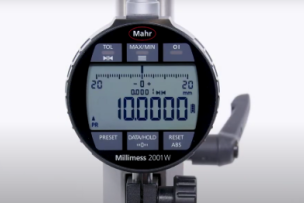Headquartered in Aurora, IL, Mitutoyo America Corporation is the world's largest provider of measurement and inspection solutions offering the most complete selection of machines, sensors, systems and services with a line encompassing CMM (coordinate measuring machines), vision, form and finish measuring machines, as well as precision tools and instruments, and metrology data management software. Mitutoyo's nationwide network of Metrology Centers and support operations provides application, calibration, service, repair and educational programs to ensure that our 8,500+ metrology products will deliver measurement solutions for our customers throughout their lifetime.
Challenging the Measurement Status Quo
Today’s manufactured components are more complex than ever, with more parts diversity, more model year changes and tighter tolerances than ever before. This is driving a need for increased quality control and the implementation of Geometric Dimensioning and Tolerancing (GD&T) and other metrology processes into the manufacturing process. And, with demands to produce parts even cheaper and faster, manufacturers are taking a new look at where the components measurement process should happen.
Traditionally, components manufacturers have relied on a measurement process in which skilled operators use computer-controlled equipment to validate randomly selected parts in batches, usually post-production and offline in a quality laboratory or other controlled environment.
Sometimes referred to as “tailgate measurement,” this process can be problematic. When the process includes frequent stops to move parts to the lab for validation, it can create bottlenecks and add significantly to total manufacturing time. On the flip side, less frequent measurements can create waste, as batches of parts that fail validation must be scrapped. It can also create the need for manual adjustments, adding the risk of human error.








Talk to Us!
Leave a reply
Your email address will not be published. Required fields are marked *